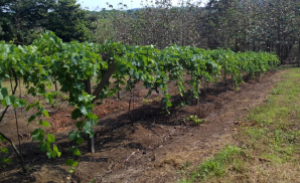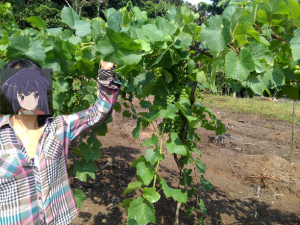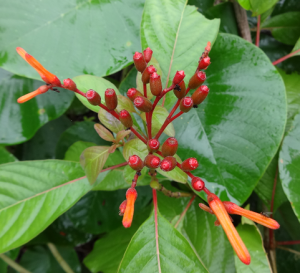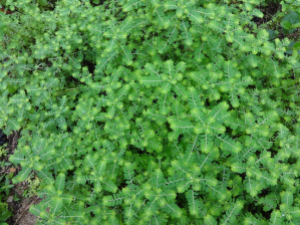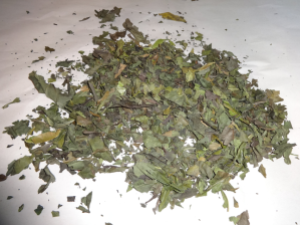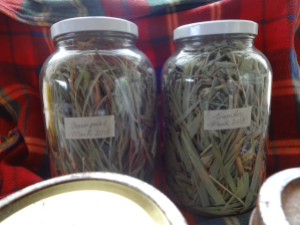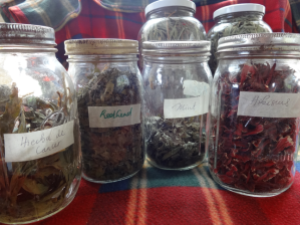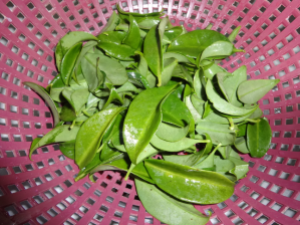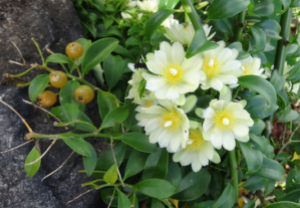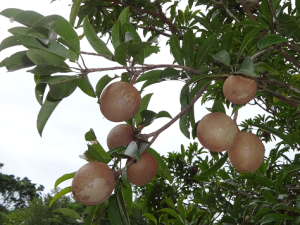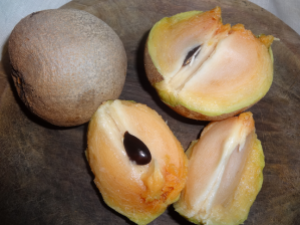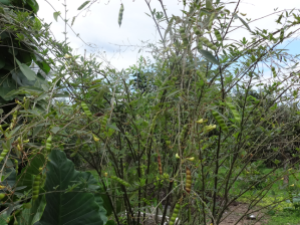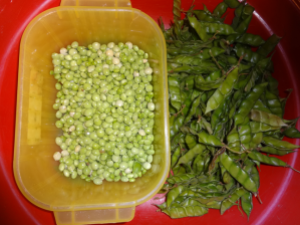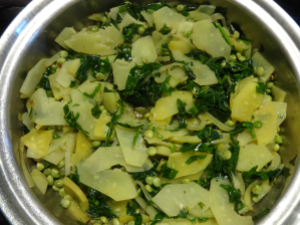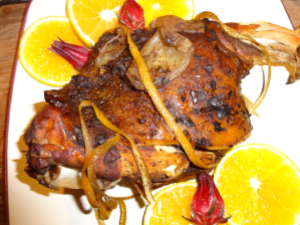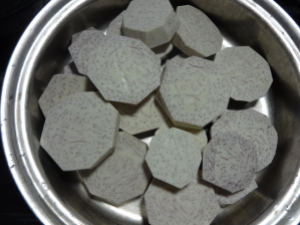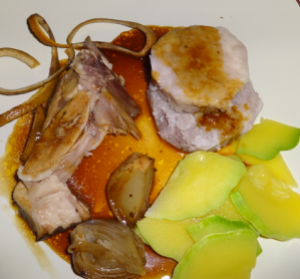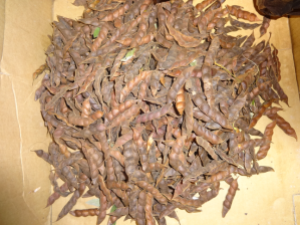 The whole house smells of bean juice with trays of hatcho miso and buckets of beans soaking in water. At this point, all windows have to be opened or else one can get over-whelmed by the fart smell of bean. What better reason to take a look outside and tell you what interesting things are happening on the farm.
The whole house smells of bean juice with trays of hatcho miso and buckets of beans soaking in water. At this point, all windows have to be opened or else one can get over-whelmed by the fart smell of bean. What better reason to take a look outside and tell you what interesting things are happening on the farm.
First of all, one jackfruit tree has started bearing this year:

We were not sure how to check for ripe fruit so we had to look up information on it; apparently, you can harvest them when they are green and to speed up maturity you can place it in the sun. When ripe, the outer shell is suppose to crack with firm pressure placed on it. Well, we have one of these babies getting a nice sun-tan outside and we can’t wait to eat it! Jackfruit can get to a massive size (20kgs or 50lbs)…our are a modest 15lb (7kgs) in weight.
The kenep has just been flowering. It has a lovely smell of vanilla which attracts honey bees. Kenep fruit are similar to lychee in that there is an outer shell which you crack into with your teeth and then you bite into a thin soft flesh around a seed. The great thing about this is that the seeds can be boiled and eaten. So far, still no sign of fruit this year..

This is a grub that we found whilst digging around for sweet potatoes. In Australia, they call them “Witchety Grubs” and traditionally they are eaten raw. Gnome has eaten one before and said that it wasn’t that good…a bit over-rated!

We tried to throw this at a duckie and she looked at us in a “duckie” way…a sideways neophobic and partially horrified look…

Looks like she doesn’t know what to do with the Witchety Grub!

